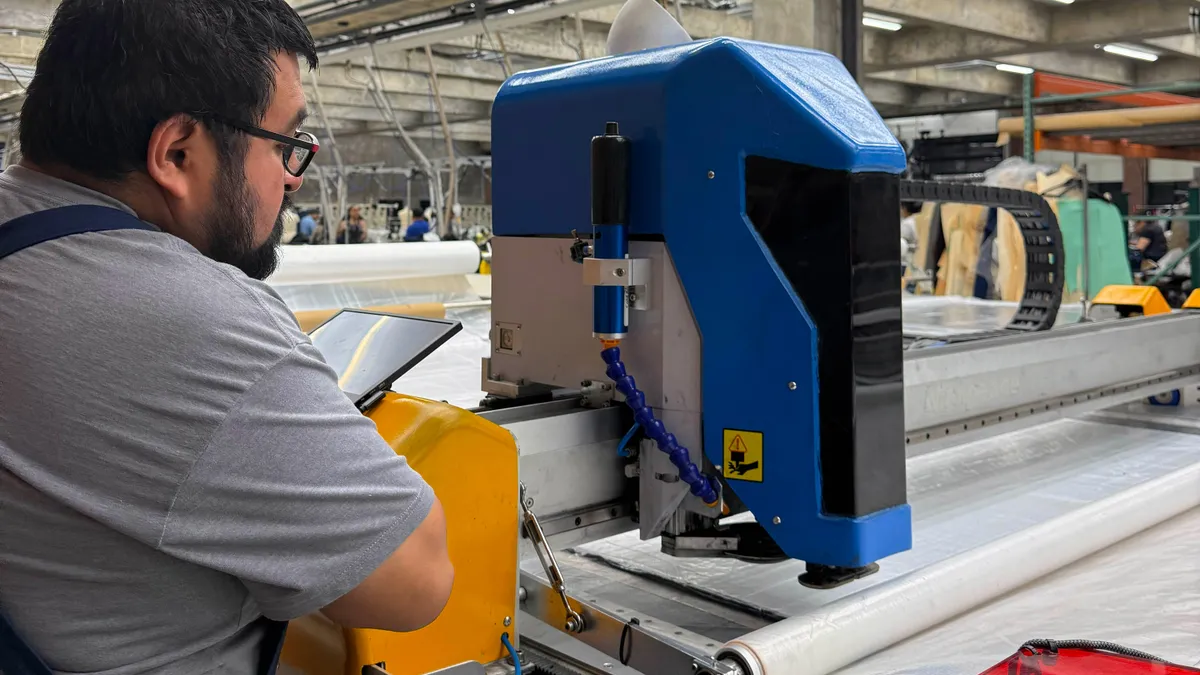Dive Brief:
- Boeing’s first quarter revenue jumped 18% year-over-year to approximately $19.5 billion, primarily driven by higher commercial plane delivery volume, according to an earnings release Wednesday.
- Boeing’s commercial aircraft unit deliveries saw a major YOY jump in Q1, distributing 130 aircraft, up from 83 planes last year as the company recovers its production volumes. The segment’s revenue also rose 75% to $8.1 billion YOY.
- 737 production gradually increased in Q1, with monthly production in the low 30s in March, Brian West, CFO and EVP of finance, said on a Wednesday earnings call. With key performance indicators continuing to progress, Boeing still expects to reach its target of manufacturing 38 units per month over the next few months, West added.
Dive Insight:
As Boeing continues ramping back up its manufacturing cadence, the company plans to request the Federal Aviation Administration to raise its production cap to 42 units per month later this year. The agency previously set the cap at 38 units per month following last year’s Alaska Airlines door plug incident.
Additionally, the company plans to increase production of its 787 program to seven, which Boeing manufactured at a rate of five planes per month in the first quarter.
However, the company won’t submit those requests until production is in a stable state for a couple of months, President and CEO Kelly Ortberg said on the call.
“I think we're really aligned on what we need to do to get to the rate increases,” Ortberg said. “So you know so far so good. We can't claim victory. We got to get to 38 and show stable performance there. But our plan seems to be working and we'll make any adjustments we need to.”
The company’s free cash flow usage was $2.3 billion, which also reflects the commercial plane deliveries and improved working capital, West said on the earnings call.
However, the results only reflect tariffs enacted as of March 31, West added. Since then, the Trump administration has hiked tariffs on China-based goods to 145%. China, in retaliation, imposed a 125% duty on U.S. imports, effective April 12. While the U.S. paused most country-specific tariffs for 90 days, a baseline 10% levy remains in effect.
Much of Boeing’s supply chain is based in the U.S., and many of its Canada- and Mexico-based imports are exempt from tariffs under the U.S.-Mexico-Canada Agreement, Ortberg said. Still, Boeing has suppliers in other countries, notably in Japan and Italy, where work is done on significant structures of its wide-body planes. The company is paying the 10% duties for those components.
Customers in China have refused to accept deliveries amid the escalating trade war.
About 70% of Boeing’s planned deliveries this year are customers outside the U.S., and the company has a backlog valued at over $500 billion dollars, West said. China represents approximately 10% of that backlog.
However, Boeing will redirect the supply to a strong market with stable demand, and the company will not continue to build aircraft for customers who will not take them, Ortberg said.
“We will continue to monitor the demand situation and if tariff-related impacts expand beyond China, we would expect to see additional pressure,” West said.
Still, Boeing set a “conservative” plan for the year, starting with a strong operational performance, which the company believes puts it in a position to largely offset potential impacts from tariffs and the U.S.’s trade war with China, West said.
The company announced Tuesday it was selling a portion of its aviation software and application assets to private equity firm Thoma Bravo for $10.55 billion, expected to close by year’s end. Additionally, the Department of Defense awarded Boeing and Lockheed Martin a contract to develop a new fighter jet, the F-47, valued at $20 billion.
The contract and pending sale fall under Boeing’s four-point recovery plan: stabilizing its business, improving the execution of its development program, changing its culture and building its new future.
While Ortberg said he feels good about Boeing’s plan overall, he still expects the China issue will take away some of the headway the company built in Q1. But until the company gets more clarity, the aircraft manufacturer will do its best to keep the issue from impacting its production flow.
“We're going to work our tail off to make sure that China issue doesn't implicate our recovery and particularly our stability in our production system,” Ortberg said. “So we'll deal with that.”












